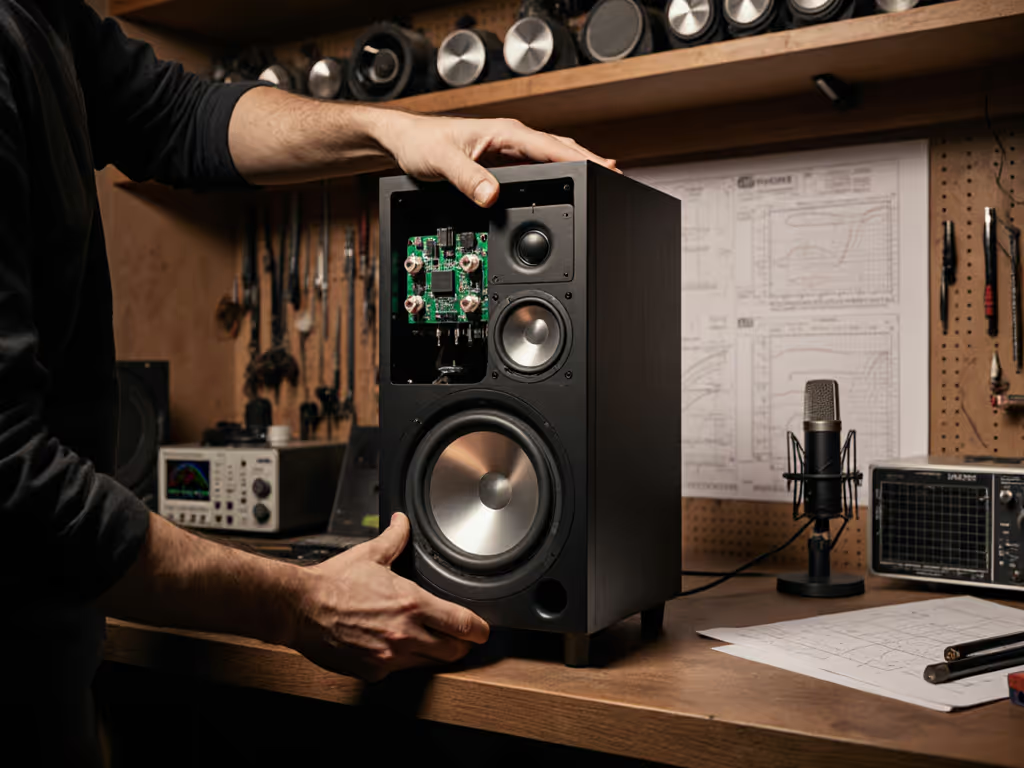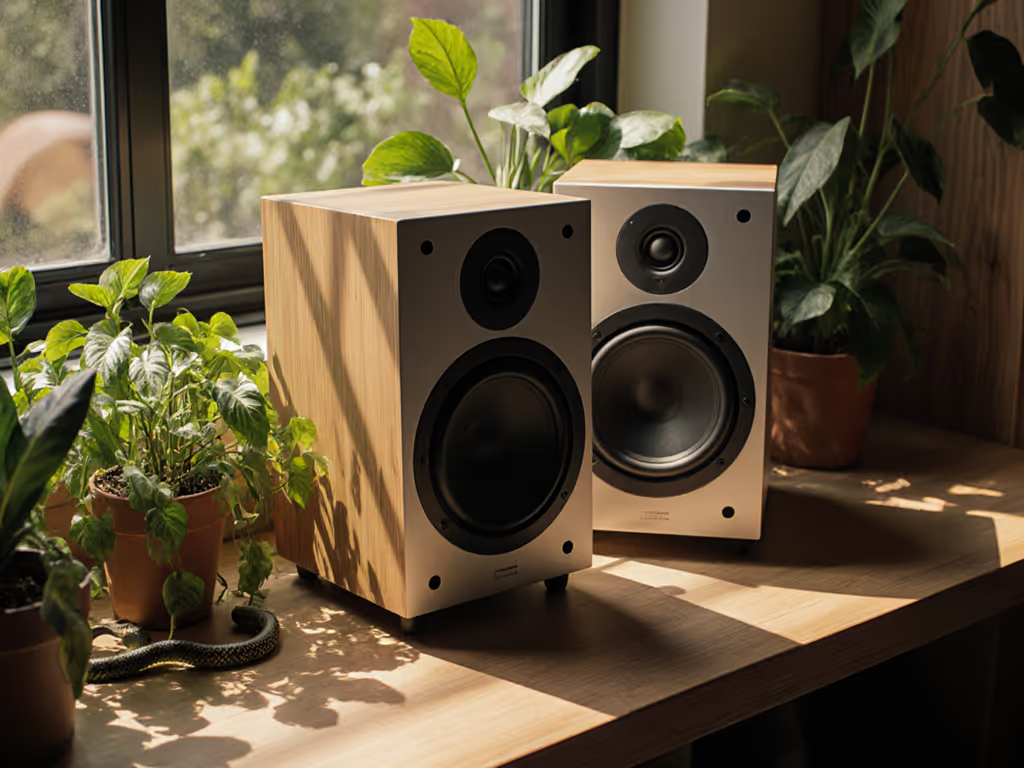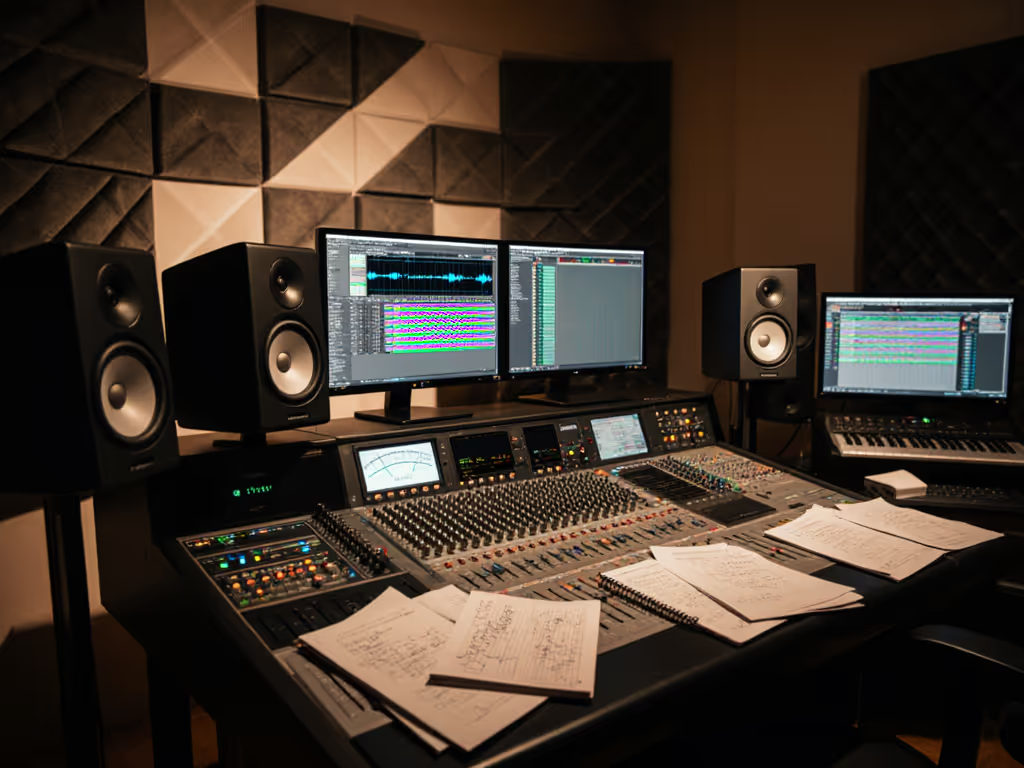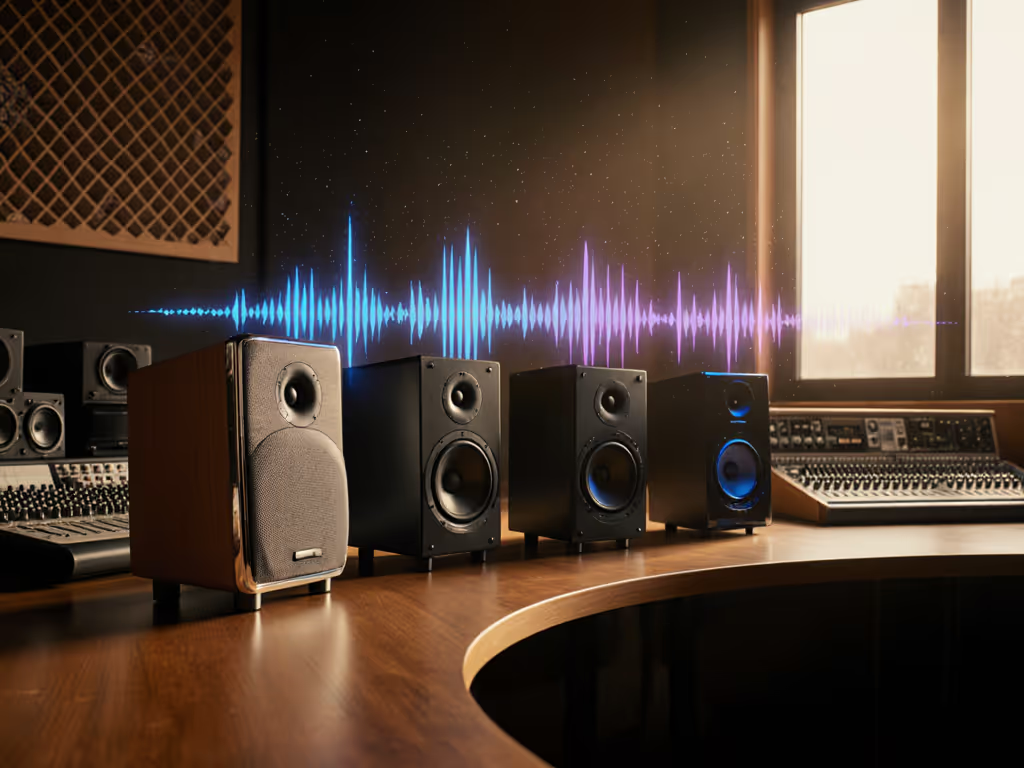
Best Studio Monitors: Driver Tech for Honest Sound Translation
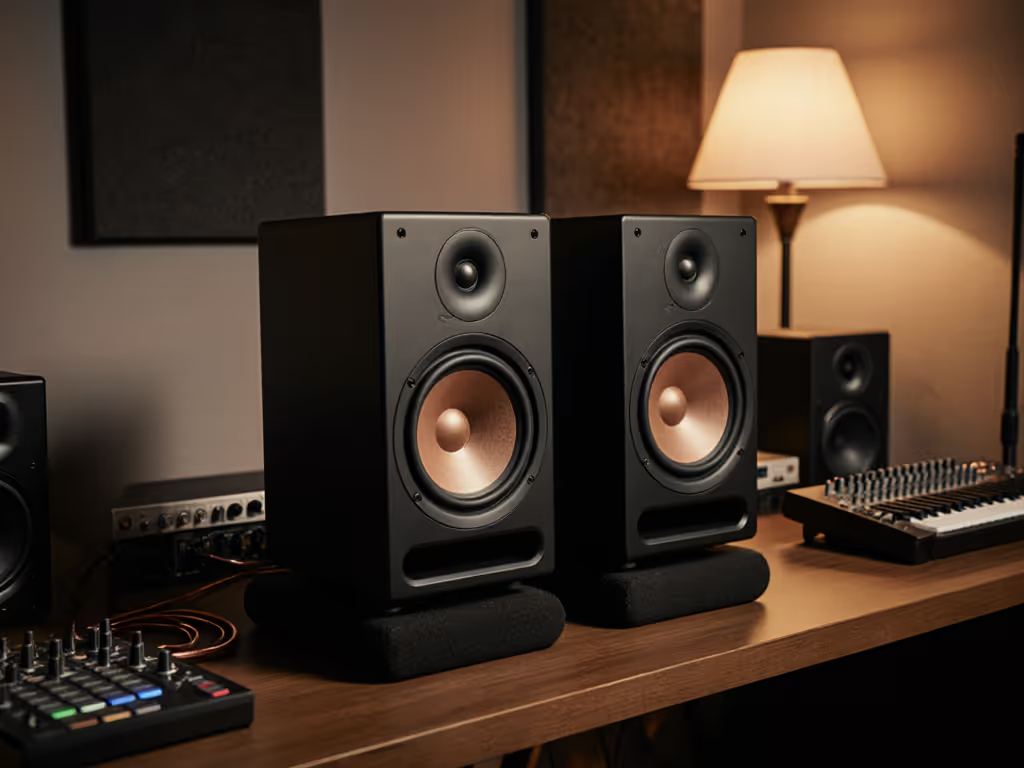
Your mix sounds amazing in your bedroom studio, until you hear it on earbuds, your car, or a friend's laptop. That sinking feeling? It is rarely your ears. It is usually your studio monitors lying to you about core frequencies. When you are chasing specs instead of stable translation, every mix becomes a gamble. Let's fix that. Forget the hype cycle around the best studio monitors. Focus on driver technologies that survive real bedrooms: compact, reflective, and crammed between desks and walls. This is not about chasing perfection; it is about building trust so you can finish songs, not revisions.
I've coached hundreds of bedroom producers. Many kept upgrading gear but still failed car checks. One rainy Tuesday, two tennis balls under each speaker and moving desks off walls changed everything. Suddenly, mixes traveled. That is when I stopped obsessing over frequency charts and started teaching how drivers interact with messy rooms. Confidence comes from routine, not specs. Today, we will unpack only the driver tech that matters for translation, so you can Place, isolate, then decide.
1. Waveguides: Your Secret Weapon Against Desk Reflections
What is a waveguide? Think of it as a "traffic director" for your tweeter's sound. Without one, high frequencies blast everywhere, smashing into your desk, walls, and laptop screens. This causes phase issues that make vocals blurry and cymbals harsh only in your room. Result? You boost highs to compensate, then earbuds sound dull.
Waveguides focus sound toward your ears, reducing reflections that lie about balance.
Why it matters for small rooms: In tight spaces (under 12 ft wide), early reflections are brutal. A well-designed waveguide (like Yamaha HS5's or JBL 305P MkII's Image Control) creates a wider "sweet spot" at desk height. You hear cleaner mids/highs without leaning forward. Pro tip: If your monitors lack waveguides, tilt them up slightly using foam wedges. For step-by-step placement tips to minimize desk reflections, see our studio monitor height and positioning guide. Gets tweeters level with your ears, bypassing desk bounce.
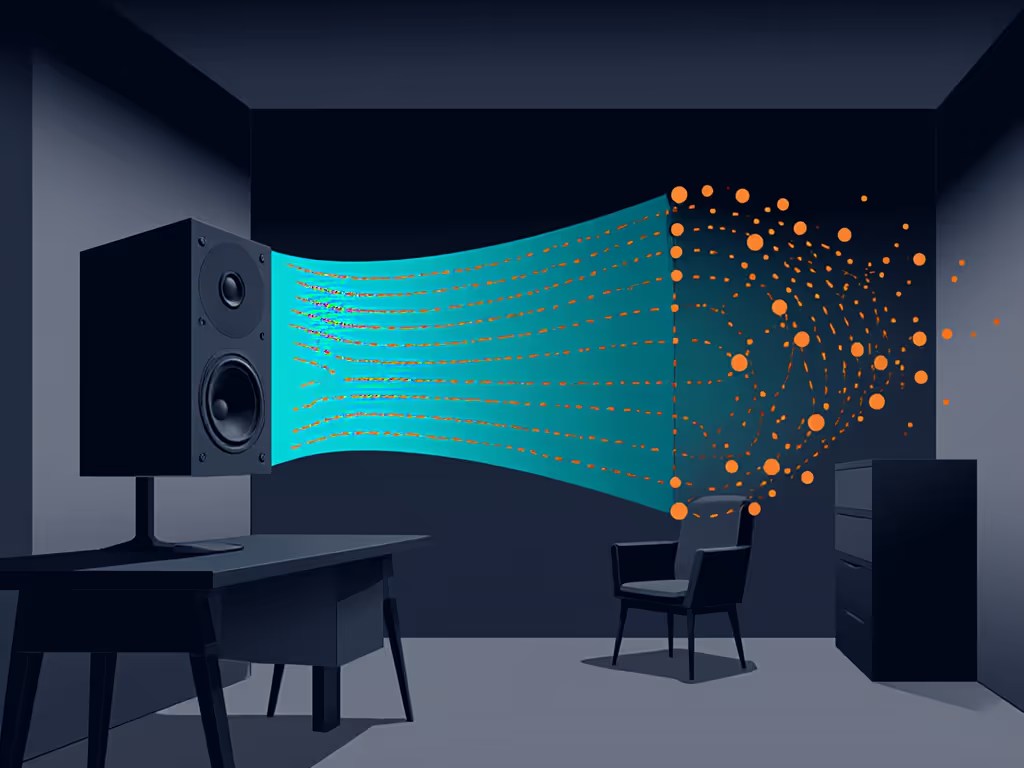
2. Tweeter Material: Silk vs. Soft Dome (It is About Fatigue, Not "Accuracy")
Soft dome vs silk tweeters sparks endless forum wars. But in a bedroom studio, it is simple: Which one lets you work 4+ hours without headaches? Hard dome tweeters (aluminum, titanium) sound "detailed" loud but cause ear fatigue fast. Bad news when you are mixing at safe, quiet levels (70 dB SPL) to avoid neighbor complaints.
The bedroom producer's fix: Silk or coated fabric tweeters (like in KRK RP7 G4 or Kali LP-6) gently roll off extreme highs. They sound smoother at low volumes, exactly where you work nightly. My rule: If you squint while adjusting vocals, your tweeters are lying. Swap to silk. Your mixes will translate warmer on phones and earbuds without you forcing "scooped" highs.
3. Woofer Materials: Why Paper Beats Fancy Composites in Small Rooms
See those specs boasting "Kevlar woofers for tight bass"? Ignore them. Woofer materials comparison for small rooms is not about rigidity, it is about controlled breakup. Fancy composites (like carbon fiber) stay rigid until they suddenly distort near their limits. Paper or pulp blends (used in Focal Shape 65 or Adam Audio T5V) break up gradually. Result? You hear bass distortion before it ruins your mix.
Why this saves your mixes: In untreated rooms, 60-120 Hz is a warzone. Paper woofers warn you when bass is masking vocals or distorting on club PAs. Composites hide it until you are in the car. Action step: Set speakers 1 ft from walls (use boundary EQ if rear-ported). Paper woofers here sound fuller without boominess, revealing truth, not hype.
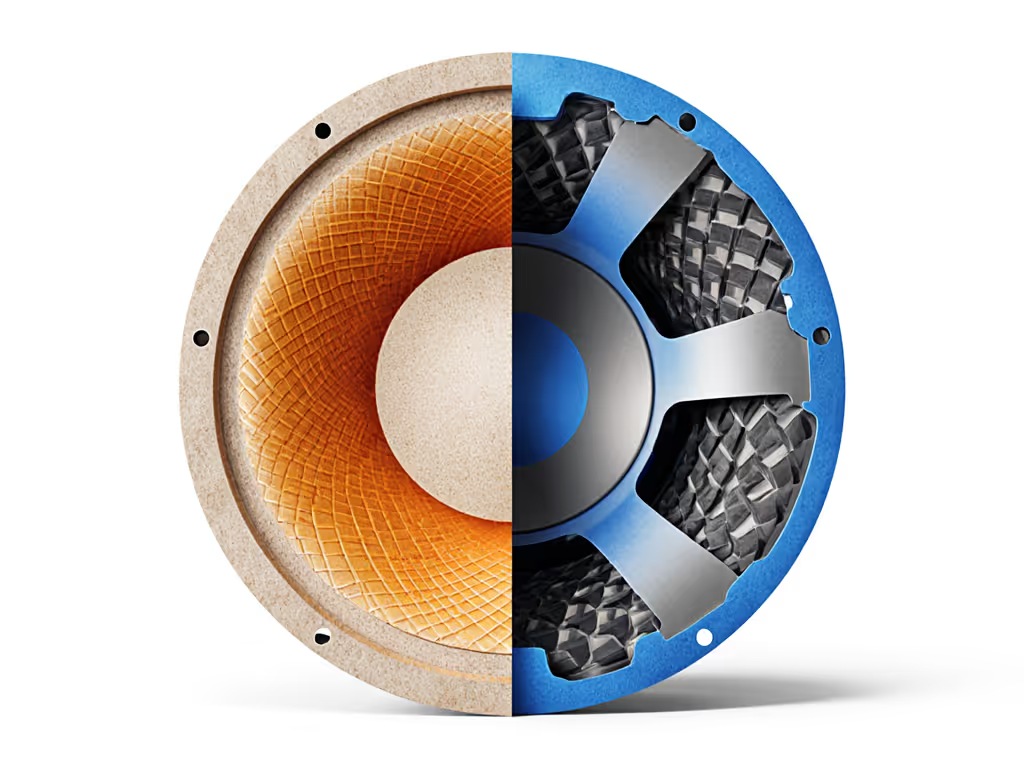
4. Porting Location: Front vs. Rear Ports in Cramped Spaces
Driver technology in monitors gets tricky here. Rear-ported speakers (like Yamaha HS series) need 12+ inches from walls, a luxury in tiny rooms. Front ports (KRK RP7 G4, Harbinger VARI) let you place monitors on desks without bass cancellation. But beware: cheap front ports can "chuff" air loudly at low volumes, making kick drums sound weak.
The fix for apartment producers: Prioritize front-ported or sealed monitors. They avoid rear-wall pressure buildup that exaggerates bass in small rooms. If stuck with rear ports? Lift them off desks using isolation pads (tennis balls work!). Gain 3 inches of clearance = truer kick drum weight.
5. The 10-Minute Translation Checklist (No Gear Swaps Needed)
You do not need new studio monitors to fix translation. Start here:
- Place: Form an equilateral triangle with speakers and your head. Critical: Move speakers off desks (use stands or books). Height: tweeters at ear level.
- Isolate: Break contact with surfaces. Tennis balls under stands or foam pads (not felt!) stop desk vibrations from muddying bass.
- Angle: Toe-in just enough to see the inside edge of the opposite monitor. Too much? Vocals thin out on phones.
- Volume: Mix at 75 dB max. If bass feels weak, reduce volume (your ears are lying, not the speakers).
- Test Smart: Only check mixes on one reference system (like Spotify on phone). Chasing 10 devices means you distrust your room.
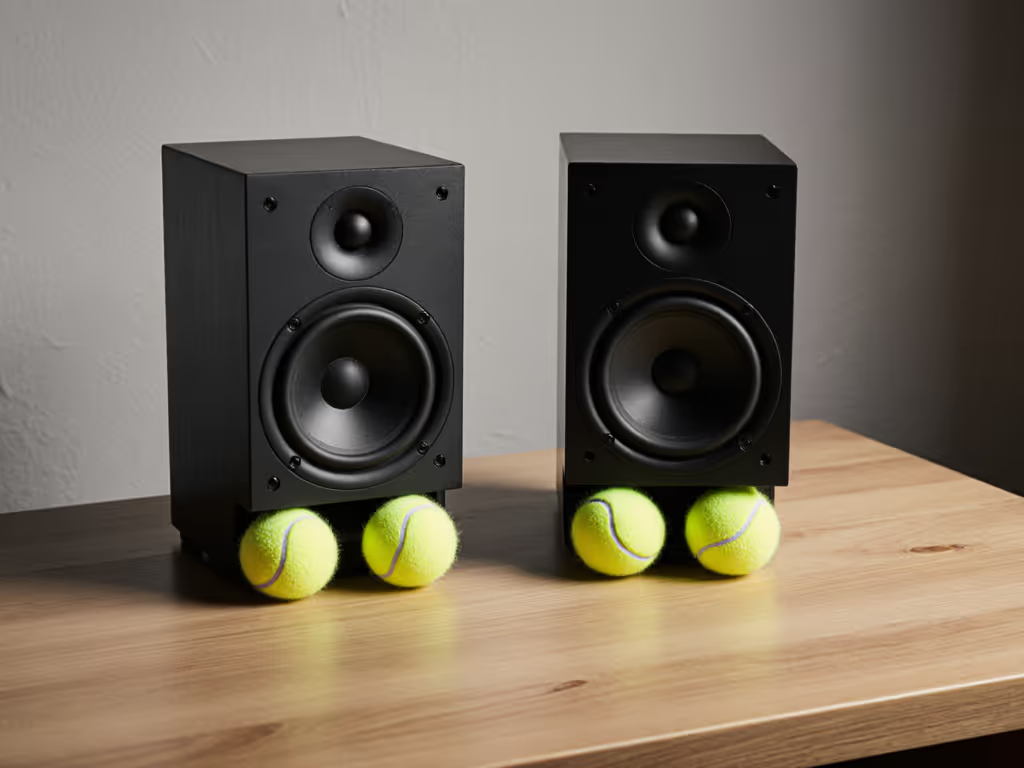
Your Trust Starts Here
Spec sheets will not save your mixes. But paper woofers that warn you before distortion? Waveguides that defeat desk reflections? Silk tweeters that let you work late? That is translation armor for bedroom studios. Stop chasing the mythical "perfect" monitor. Start trusting a setup that is honest at your volume, in your space. Because as I tell my workshop students: Set it right once; spend your energy finishing songs.
Related Articles

